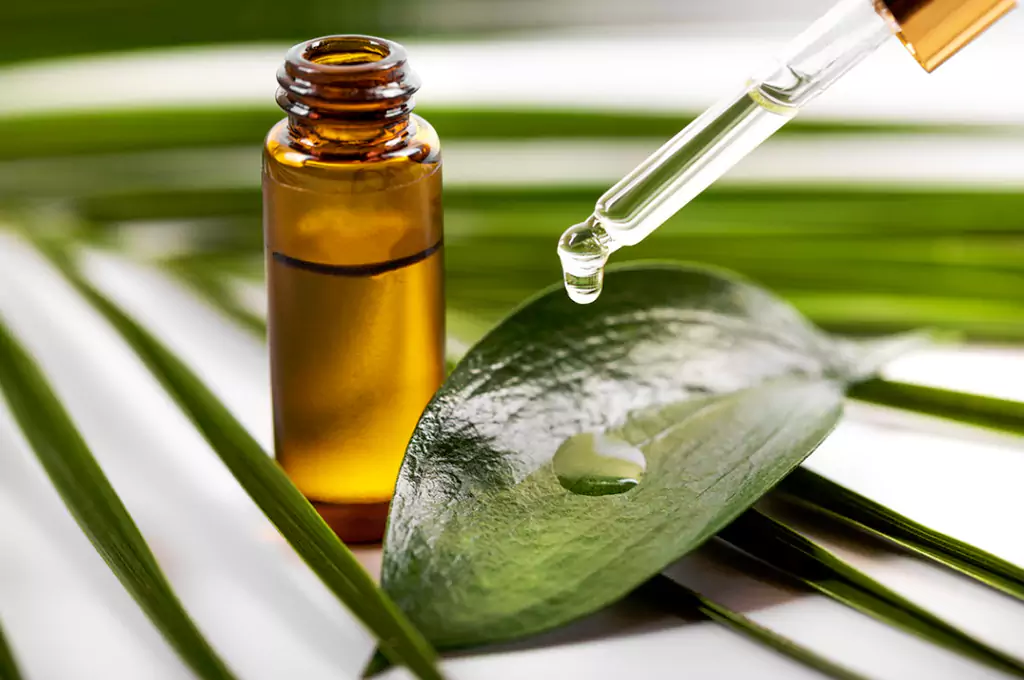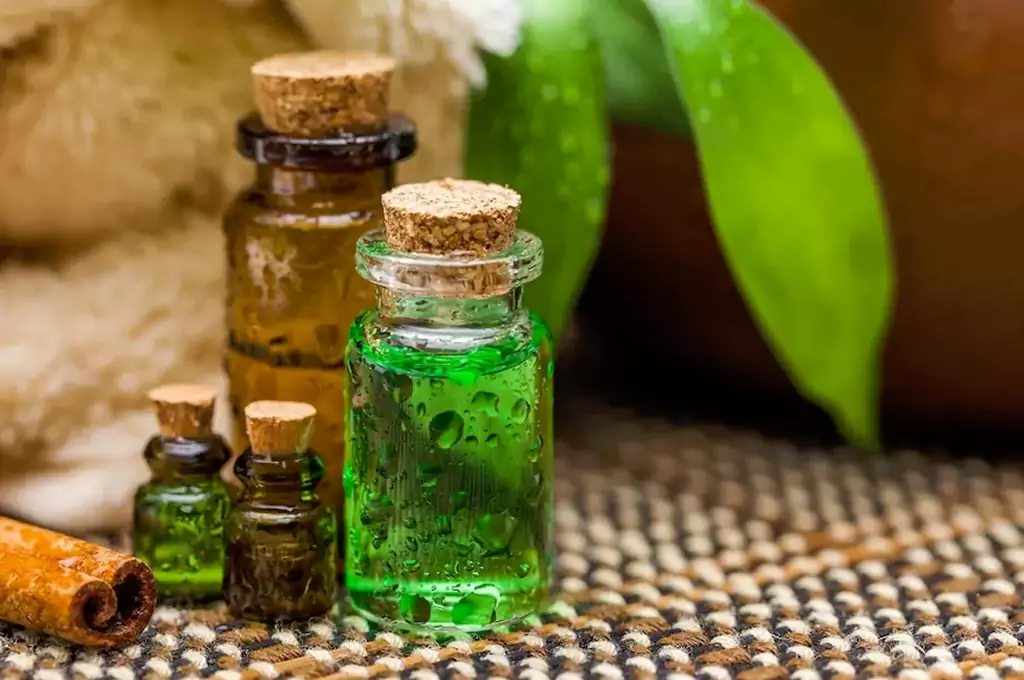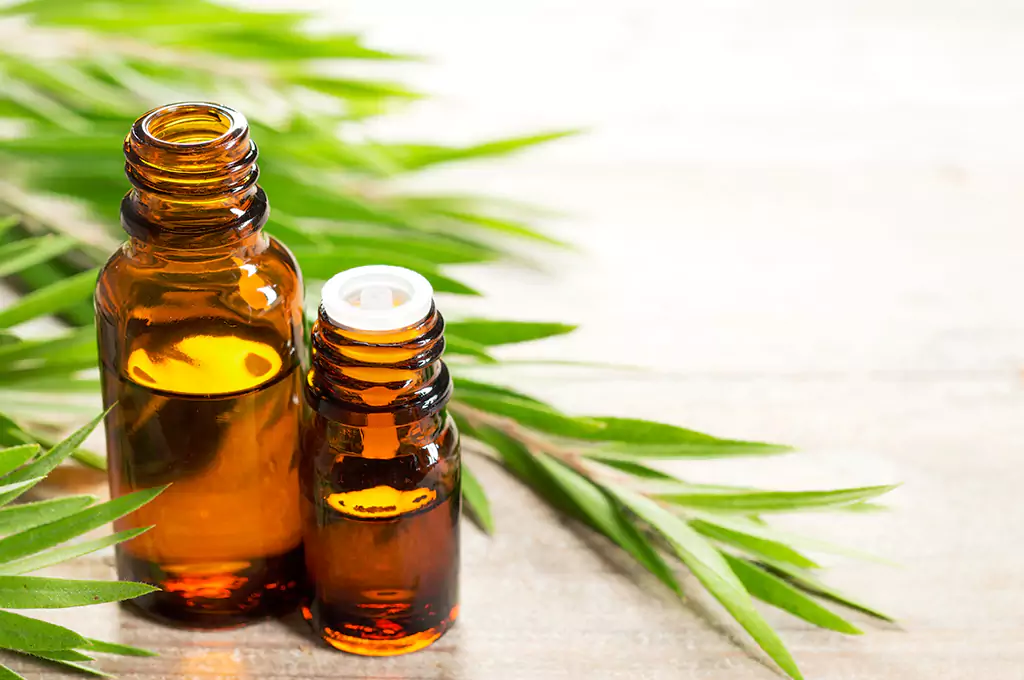Tea Tree Oil: The All-Natural Solution for Healthy Skin, Hair, and More

- What is Tea Tree Oil?
- Benefits of Tea Tree Oil
- How to Use Tea Tree Oil
- Tea Tree Oil vs. Other Essential Oils
- Side Effects and Risks
- Choosing and Storing Tea Tree Oil
- Conclusion
Tea tree oil is a natural remedy used for centuries for its antiseptic and healing properties. This essential oil is extracted from the leaves of the tea tree, which is native to Australia. Tea tree oil has become increasingly popular in recent years for its numerous benefits for skin, hair, and overall health.
Natural remedies have gained popularity recently due to their effectiveness and lack of harmful side effects. Tea tree oil is one such remedy that has proven to be a versatile and effective solution for various skin and hair problems.
In this article, we will explore tea tree oil’s uses, benefits, and side effects. We will also provide tips on using tea tree oil safely and effectively to improve your skin, hair, and overall health.
What is Tea Tree Oil?
Tea tree oil, also known as melaleuca oil, is one of the best essential oils derived from the leaves of the tea tree (Melaleuca alternifolia), a small tree native to Australia. The tea tree has been used for medicinal purposes by Australian Aboriginals for centuries, and tea tree oil has been used as a natural remedy for various ailments for over a hundred years.
Tea tree oil is extracted through steam distillation of the tea tree leaves. The resulting oil is a clear, pale yellow liquid with a fresh, medicinal scent. The chemical composition of tea tree oil is complex, with over 100 components, including terpenes, terpinen-4-ol, and cineole. These components are responsible for the oil’s antiseptic, antibacterial, antifungal, and anti-inflammatory properties.
The properties of tea tree oil make it a valuable natural remedy for various skin and hair problems. It has been used traditionally for its antiseptic properties to treat cuts, wounds, and other skin infections. Its antifungal properties make it an effective treatment for fungal infections such as athlete’s foot and ringworm. Tea tree oil also has anti-inflammatory properties, effectively reducing redness and inflammation associated with acne, eczema, and psoriasis.
Tea tree oil’s chemical composition and properties make it a versatile and effective natural remedy for various skin, hair, and health problems. However, using tea tree oil safely and effectively is essential, as excessive or incorrect use can lead to side effects and skin irritation.
Benefits of Tea Tree Oil
Tea tree oil has numerous benefits for skin, hair, and overall health. Here are some of the most significant benefits of using tea tree oil:
Skin Care: Tea tree oil is widely used in skin care products due to its anti-inflammatory and antimicrobial properties. It can effectively treat acne, eczema, and psoriasis by reducing inflammation, redness, and itching. Its antifungal properties make it an effective treatment for fungal infections such as athlete’s foot, nail fungus, and ringworm.
Hair Care: Tea tree oil is also beneficial for hair care. Its antifungal and antibacterial properties can effectively treat dandruff and lice. It can also stimulate hair growth by increasing blood circulation to the scalp and nourishing hair follicles.
Oral Care: Tea tree oil is a natural remedy for oral care. Its antibacterial properties effectively treat tooth decay, bad breath, and gum disease. It can be used as an ingredient in toothpaste or mouthwash for optimal results.
Immune System Support: Tea tree oil can also support the immune system by fighting off bacteria and viruses. Its antiviral and antibacterial properties make it an effective natural remedy for colds, flu, and other infections.
Household Cleaning: Tea tree oil’s antifungal and antimicrobial properties make it an effective ingredient in household cleaning products. It can clean surfaces, floors, and laundry to kill bacteria, viruses, and fungi.
Tea tree oil’s numerous benefits make it a versatile and effective natural remedy for various health and household problems. However, using tea tree oil safely and effectively is essential, as excessive or incorrect use can lead to side effects and skin irritation.
How to Use Tea Tree Oil

Tea tree oil can be used topically, aromatically, orally, and for household cleaning. However, following the proper precautions and safety tips to use tea tree oil safely and effectively is essential.
Precautions and Safety Tips: Tea tree oil should never be ingested, and keeping it out of reach of children and pets is essential. It should always be used in a diluted form and never applied directly to the skin. If you have sensitive skin or allergies, doing a patch test before using tea tree oil is best. It is also important to avoid using tea tree oil near the eyes or mucous membranes.
Topical Application: Tea tree oil can be applied topically to the skin and hair, but it should always be diluted with a carrier oil such as coconut oil, jojoba oil, or olive oil. A general rule of thumb is to mix one drop of tea tree oil with ten drops of carrier oil. Tea tree oil can be used for acne, eczema, psoriasis, dandruff, and lice by applying it to the affected area with a cotton swab or adding it to shampoo or conditioner. Here are some recipe ideas for skin and hair care:
Acne Treatment: Mix two drops of tea tree oil with one tablespoon of raw honey and apply to the face for 10-15 minutes before rinsing off.
Dandruff Treatment: Add 2-3 drops of tea tree oil to your regular shampoo and use as usual.
Lice Treatment: Mix 2-3 drops of tea tree oil with one tablespoon of carrier oil and apply to the scalp. Cover the head with a shower cap and leave it on for a few hours before washing off.
Aromatherapy: Tea tree oil can be used in aromatherapy by diffusing or inhaling it directly. Tea tree oil can be added to an essential oil diffuser or used in a steam inhalation by adding a few drops to hot water and inhaling the steam.
Oral Use: Tea tree oil can be used for oral care by adding a few drops to mouthwash or toothpaste. It is important to ensure that the tea tree oil is 100% pure and food-grade quality.
Household Cleaning: Tea tree oil can be used in household cleaning by adding a few drops to an all-purpose cleaner or laundry detergent. It can also clean surfaces and floors by mixing it with water and vinegar.
In conclusion, tea tree oil is a versatile and effective natural remedy for various health and household problems. However, it is essential to follow the proper precautions and safety tips and use it in a diluted form for topical application. Tea tree oil can also be used in aromatherapy, oral care, and household cleaning.
Tea Tree Oil vs. Other Essential Oils

Tea tree oil is just one of the many essential oils available today. While each essential oil has unique properties and uses, some oils may be more effective than others for specific purposes. In this section, we will compare tea tree oil with other popular essential oils and discuss the pros and cons of using tea tree oil for different purposes.
Tea Tree Oil vs. Lavender Oil
Tea tree and lavender oil are widely used in aromatherapy and skin care. Both oils are known for their antiseptic, anti-inflammatory, and calming properties. However, there are some differences between the two oils.
Tea tree oil is more effective than lavender oil in treating acne and other skin infections. It has stronger antiseptic and antibacterial properties, which can help kill the bacteria that cause acne. On the other hand, lavender oil is more effective in treating eczema and other skin conditions caused by inflammation. Lavender oil is also known for its calming properties and can help reduce stress and anxiety.
Tea Tree Oil vs. Peppermint Oil
Tea tree oil and peppermint oil are used in aromatherapy and for their medicinal properties. Peppermint oil is known for its cooling and refreshing properties and is often used to relieve headaches and muscle pain. Tea tree oil, on the other hand, is more effective in treating respiratory infections and fungal infections.
When it comes to oral care, peppermint oil is often used in toothpaste and mouthwash to freshen breath and kill bacteria. Tea tree oil can also be used for oral care, but it should be used cautiously as it can be toxic if ingested.
Tea Tree Oil vs. Eucalyptus Oil
Eucalyptus oil and tea tree oil are both known for their respiratory benefits. Eucalyptus oil is often used in cough drops and inhalers to help relieve congestion and coughs. Tea tree oil can also be used to relieve respiratory infections, but it is not as effective as eucalyptus oil.
Tea tree oil is more effective than eucalyptus oil in treating skin infections such as acne and fungal infections. Eucalyptus oil can also be used to treat skin infections, but it is not as effective as tea tree oil.
Overall, each essential oil has its own unique set of properties and uses. While tea tree oil is versatile and can be used for various purposes, it may not be the best choice for every situation. Researching and understanding the properties of different essential oils before using them is vital.
Side Effects and Risks
Despite its many benefits, tea tree oil can cause some side effects and risks when misused or in excessive amounts. It is essential to know these risks to avoid any adverse reactions.
Possible allergic reactions and sensitivities: Tea tree oil is generally considered safe when used properly, but some individuals may develop an allergic reaction or sensitivity to it. Symptoms of an allergic reaction may include redness, itching, swelling, and blistering. If you experience any of these symptoms, stop using the oil and seek medical attention immediately.
Contraindications and interactions with medications: Tea tree oil can interact with some medications, such as blood thinners and hormone replacement therapy. It is also not recommended for individuals with hormone-sensitive conditions, such as breast cancer or endometriosis, as it may interfere with hormone levels. Always consult a healthcare provider before using tea tree oil if you take any medications or have a pre-existing medical condition.
Safety concerns for pregnant and breastfeeding women: Pregnant and breastfeeding women should be cautious when using tea tree oil as there is limited research on its safety during these periods. It is recommended to avoid using tea tree oil during the first trimester of pregnancy, as it may interfere with hormone levels. Nursing mothers should also avoid using tea tree oil on their breasts or nipples, as it may harm the baby if ingested. It is best to consult with a healthcare provider before using tea tree oil during pregnancy or while breastfeeding.
In conclusion, tea tree oil is generally considered safe when used correctly. Still, being aware of the possible side effects and risks is essential. Always use tea tree oil as directed, and consult with a healthcare provider before using it if you are pregnant, breastfeeding, or have a pre-existing medical condition.
Choosing and Storing Tea Tree Oil

When choosing tea tree oil, it is important to select a high-quality product to ensure its efficacy and safety. Here are some tips for selecting and storing tea tree oil:
How to select a high-quality tea tree oil: Look for tea tree oil that is 100% pure and organic, with no additives or synthetic fragrances. Check the label for the Latin name Melaleuca alternifolia, which is the correct species of tea tree that produces the oil. Choose a reputable brand with good reviews and certifications, such as USDA Organic or Essential Oil Safety Tested.
Proper storage and shelf life: Tea tree oil should be stored in a cool, dry, and dark place, away from sunlight and heat sources. Keeping it in an airtight, amber glass bottle is best to prevent oxidation and degradation. The shelf life of tea tree oil is typically 2-3 years. Still, it may vary depending on the quality and storage conditions. Discard any tea tree oil with a rancid or foul odor or exceeding its shelf life.
Tips for using tea tree oil with other oils and ingredients: Tea tree oil can be combined with other essential oils and carrier oils to enhance its benefits and reduce the risk of adverse reactions. Some popular combinations include tea tree oil with lavender oil for skin care, tea tree oil with peppermint oil for headache relief, and tea tree oil with coconut oil for hair care. Always dilute tea tree oil before use, and perform a patch test on a small skin area to check for any allergic reactions or sensitivities.
In conclusion, choosing and storing high-quality tea tree oil is crucial for its effectiveness and safety. Always select a pure and organic product from a reputable brand, store it properly in a cool and dark place, and be mindful when using it with other oils and ingredients.
Conclusion
In conclusion, tea tree oil is a versatile and powerful essential oil used for centuries for its medicinal properties. It has proven effective in treating various skin and hair conditions, promoting oral hygiene, supporting the immune system, and providing a natural alternative for household cleaning.
When using tea tree oil, it is essential to follow proper dilution and safety guidelines to avoid adverse reactions. It is also essential to choose a high-quality tea tree oil and store it correctly to ensure its potency and effectiveness.
Tea tree oil is an excellent addition to a natural and holistic lifestyle but is not a one-size-fits-all solution. While it may work well for some individuals, others may experience adverse reactions or find it less effective than other essential oils.
Tea tree oil is a valuable natural health and beauty tool. Still, it should always be used cautiously and in consultation with a healthcare professional. By understanding its benefits and limitations, individuals can make informed decisions about incorporating tea tree oil into their daily routines.







